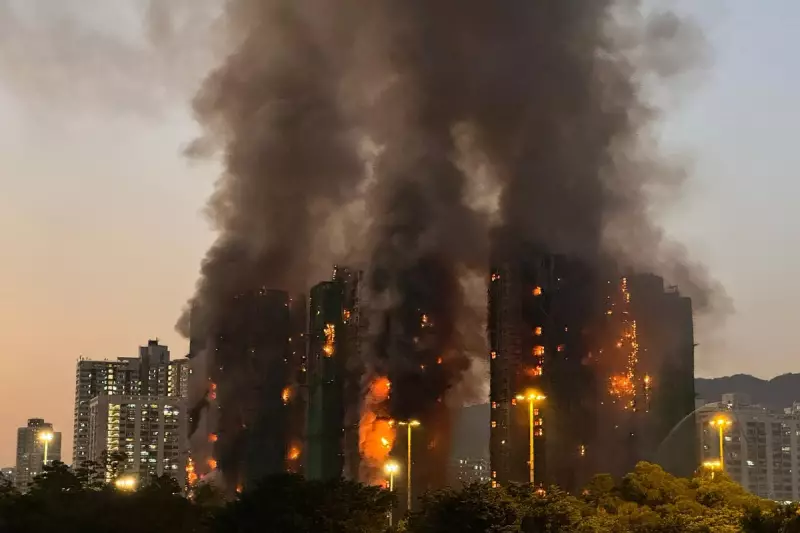
Hong Kong's Skyscraper Inferno: A City in Mourning
A catastrophic fire has torn through a Hong Kong residential estate, leaving at least 44 people dead and raising urgent questions about the safety of traditional bamboo scaffolding. The blaze, which began on Wednesday afternoon at the Wang Fuk Court complex in the Tai Po district, engulfed seven of the estate's eight 32-storey towers, creating a terrifying spectacle that sent shockwaves through the Asian financial hub.
This is the first fire in 17 years to be declared a top-tier Level 5 emergency by Hong Kong's authorities. The fire was still not fully under control by Thursday, with officials warning it could take the entire day to extinguish. The scale of the disaster has triggered a massive emergency response, drawing firefighters from across the city.
A Deadly Chain Reaction
Experts are pointing to the bamboo scaffolding enveloping the buildings, which were undergoing renovations, as a key factor in the fire's rapid spread. Witnesses reported hearing a loud noise around 2.45pm on Wednesday when the fire started. The highly combustible bamboo allowed flames to leap from one tower block to another with terrifying speed.
Among the first confirmed fatalities was firefighter Ho Wai-ho, 37, who is being hailed as a gallant and dedicated public servant. The tragedy highlights the extreme dangers faced by emergency crews battling such an intense high-rise inferno.
Failed Protections for the Most Vulnerable
The disaster represents a profound failure in the city's duty to protect its most vulnerable residents. Tai Po District Council member Lo Hiu-fung stated that most of those trapped were believed to be elderly. In a high-rise fire, residents are instructed to evacuate via stairs, a daunting and often impossible task for the elderly or those with disabilities living on higher floors.
While Hong Kong is a modern city with generally high safety standards—this is only the second Level 5 incident since the 1997 handover—the use of bamboo scaffolding has long been a known risk. A March memo from city official Terence Lam explicitly warned about the material's high combustibility and associated safety concerns.
Official figures reveal that at least 23 people have died since 2018 in industrial accidents involving bamboo scaffolding. The government had already committed to switching to metal scaffolding for at least half of all new public construction projects, a move welcomed by industrial safety advocates.
The End of an Era for Bamboo?
Hong Kong is the only major Asian city that still relies heavily on bamboo for scaffolding. While often viewed as a quirky, sustainable tradition, the Wang Fuk Court fire has exposed it as a lethal anachronism. Chinese President Xi Jinping has demanded an all-out effort to tackle the blaze and help those affected, placing huge pressure on the local government to act.
For the residents of this densely packed metropolis, where soaring rents make high-rise living a necessity for most, the sight of bamboo-clad buildings has been transformed overnight from a cultural curiosity into a terrifying hazard. The call for change is now deafening: for the sake of public safety, the bamboo must go.





